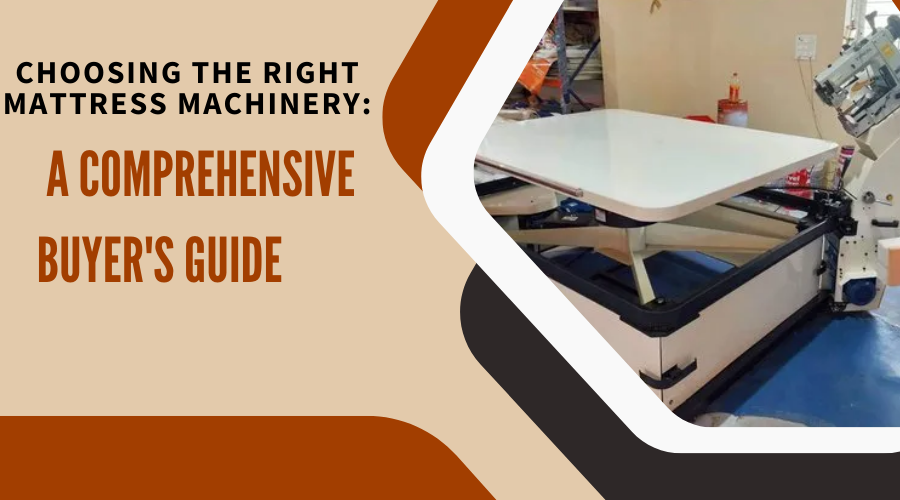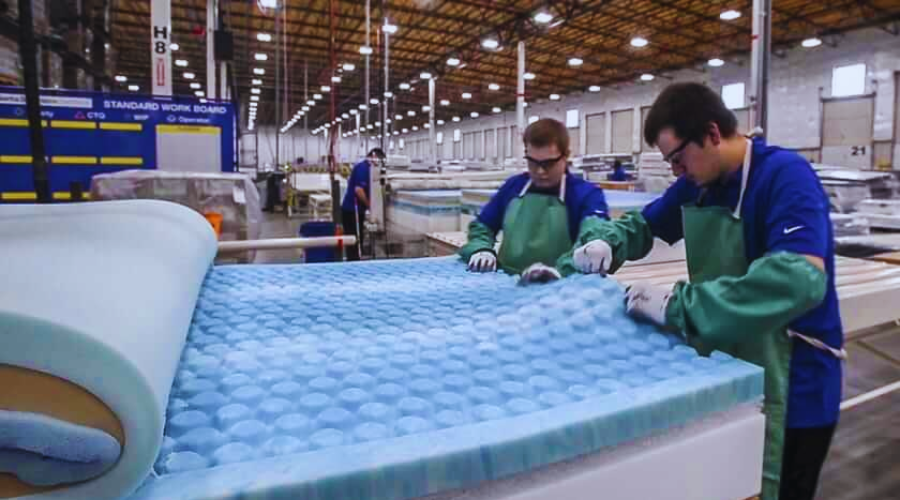
Welcome to the intricate universe of mattress manufacturing, where the selection of machinery is not just a choice but a strategic decision that shapes the trajectory of your production endeavors. In this comprehensive buyer's guide, we embark on an exhaustive exploration of the multifaceted landscape of mattress machinery. We aim to equip you with comprehensive insights, practical tips, and vital considerations, ensuring your decision aligns seamlessly with your manufacturing objectives and aspirations.
Embarking on this journey requires a profound understanding of your unique manufacturing requirements. Consider the scale of your operation, the diverse types of mattresses you envision producing, and the ambitious goals you've set for your production output. Let's delve into the key factors that demand your attention:
• The foundational step involves determining the quantity of mattresses earmarked for production. This critical factor significantly influences the type and capacity of machinery required to meet your production targets effectively.
• If your product portfolio spans various mattress types—from memory foam to innerspring and hybrids—it's paramount to choose machinery that boasts the versatility to accommodate this diversity seamlessly.
• Evaluate the optimal level of automation tailored to your production scale. While automated systems undoubtedly enhance efficiency, manual operation provides unparalleled flexibility, especially for smaller-scale operations that thrive on adaptability.
In this section, we embark on a detailed exploration of the diverse world of mattress machinery, unraveling the intricacies of available types and the transformative features that have the potential to elevate your production capabilities.
• Positioned as the artists in your production line, quilting machines are indispensable for creating intricate patterns and stitching details in mattress covers. They play a pivotal role in enhancing the aesthetic allure of your mattresses.
• These machines ensure precision in coil assembly, the backbone of innerspring mattresses. The springs' quality directly impacts the mattress's overall comfort and durability, making these machines crucial contributors to your product's success.
• In the era of customization, foam-cutting machines take center stage. These customizable machines are essential for creating foam components with precision, a pivotal aspect for mattresses incorporating different foam layers.

• Elevate your commitment to quality by opting for machinery that guarantees precise cutting, stitching, and assembly. Consistency in quality is not just a goal; it's the cornerstone of success in the competitive mattress industry.
• The ability to adapt to different mattress designs and sizes is a hallmark of successful machinery. Choose equipment that allows flexibility, empowering you to respond dynamically to market trends and consumer preferences.
• Uninterrupted production is the lifeblood of your manufacturing operation. Choose machinery with maintenance considerations in mind to ensure longevity and reliability. Downtime is more than a mere inconvenience; it has the potential to be a significant and expensive setback.
• Advanced quilting systems offer myriad capabilities for manufacturers aiming to create visually stunning mattress covers with intricate designs. These systems are not just machines; they are the artists who paint the visual narrative of your brand.
• In the world of high-volume production, efficiency is non-negotiable. High-speed spring coilers streamline the coiling process, minimizing manual intervention and maximizing output. They are the workhorses that ensure your production keeps pace with demand.
• Precision takes center stage with CNC foam-cutting machines. In an industry where layers and contours define comfort, these machines offer the finesse required to create complex foam shapes easily. Your mattresses aren't just products; they are experiences, and CNC machines are the architects of that experience.
Q: What machinery is essential for a startup mattress manufacturing business?
• A: For startups, focusing on basic machinery such as a quilting machine, a foam cutter, and a simple spring coiler is a prudent approach. As your business evolves, you can strategically expand your machinery lineup.
Q: How does automation impact production efficiency?
• A: Automation is a catalyst for efficiency. It streamlines processes, reduces reliance on manual labor, and enhances precision. However, it's crucial to align the level of automation with your production scale and specific needs.
Choosing the right mattress machinery is not just a decision; it's a strategic move that shapes the future of your manufacturing endeavors. By understanding your needs, navigating the machinery landscape, and considering key features, you are not merely investing in equipment but sculpting a legacy of quality and efficiency in the dynamic world of mattresses.
In this ever-evolving industry, the right machinery is not just a tool; it's an innovation partner. It ensures that each mattress that leaves your production line is not just a product; it's a testament to precision, comfort, and craftsmanship.
As you navigate the choices and complexities of mattress machinery, remember that your decisions today are the seeds of success for your brand tomorrow. The mattress industry is a realm of constant evolution, and by making informed choices, you position yourself as a leader in delivering not just mattresses but dreams of quality sleep.